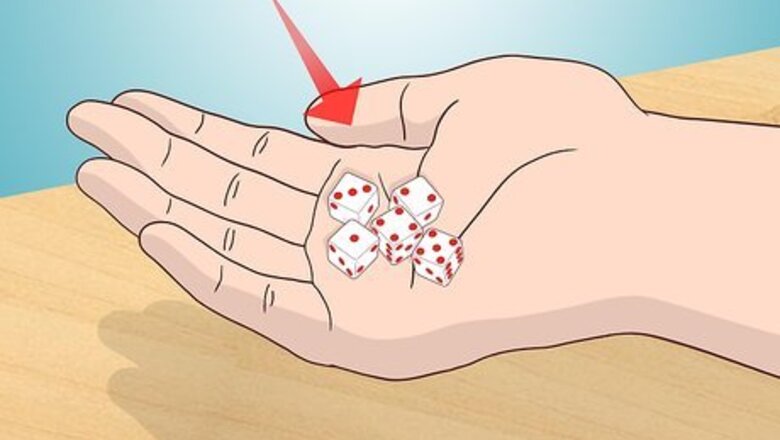
views
X
Research source
It continues to be popular among school teachers, as it teaches students important problem-solving skills and does not require a high level of mathematical knowledge. Find out how to play the game, solve the puzzle and share the game with others.
Playing the Game
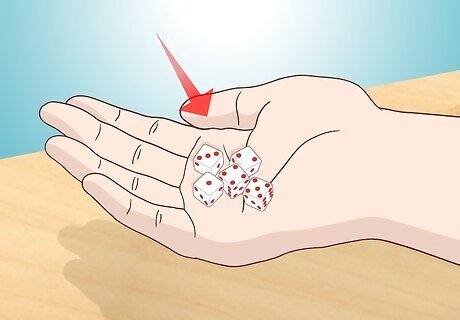
Get at least four or five dice. Five is the optimal number of dice to begin with. You can play the game at a more advanced level with more dice.
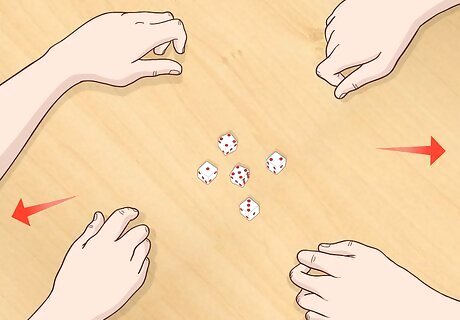
Play with a friend who already knows the solution. The aim of the game is to determine how many petals around the rose there are each time multiple dice are rolled. Get someone to facilitate the game for you. They will roll the dice and tell you the number of petals around the rose. The facilitator should not disclose the reasoning behind this number. That's for you to work out! Eventually, when you solve the puzzle, you will be able guess the number of petals on a particular roll of the dice on your own.
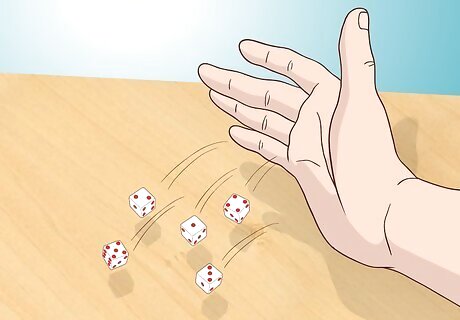
Roll the dice. Your friend (who already knows the solution) will reveal how many petals around the rose there are for this roll. At first, it will be unclear how they got this number. Get them to roll the dice several times and tell you how many petals there are each time. Can you see a pattern emerging that determines the number of petals around the rose each turn? Take your time. It may take several rolls to figure out the solution.
Solving the Puzzle
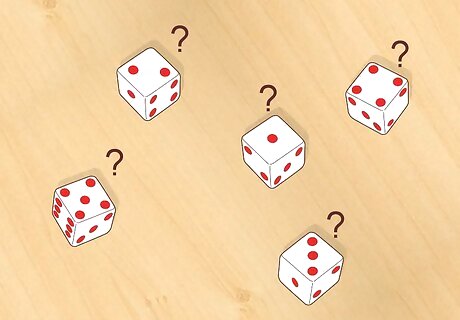
Pay attention to the name of the game. Solving this puzzle requires you to exercise your problem-solving skills. Think 'outside the box' or laterally to assess the information you have in front of you. This will help you see the hidden rules of the game determining the number of petals around the rose. For example, the game is called "Petals Around the Rose" and this name is significant. Why might it be called petals around the rose? How might this name relate to the faces of the dice you are seeing?
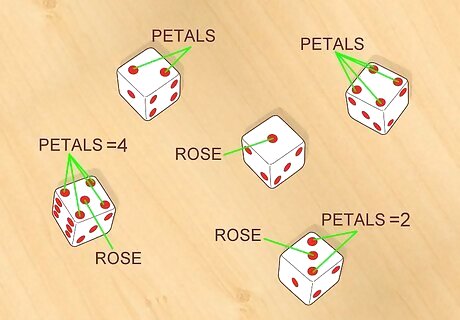
Look at the dice with dots in the middle. Dice showing 3 or 5 have dots in the center of their face. These dice represent the roses. The petals are the dots surrounding this center dot. For example, a die with a 5 on it has 4 petals around the rose. A die with a 3 on it has 2 petals around the rose. A die with 1 only has one dot on its face. It is a rose without petals.
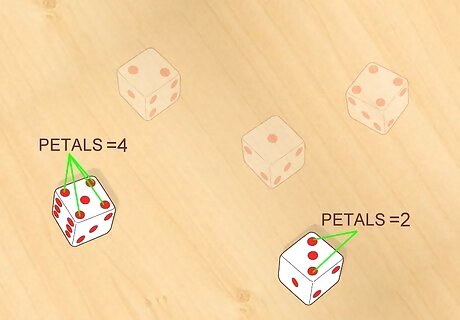
Disregard the dice showing even numbers. Dice showing 2, 4 or 6 do not have a dot in the middle of their face. They are not roses and you can disregard them. They don't count when you are adding up the total number of petals around the rose for a particular roll.
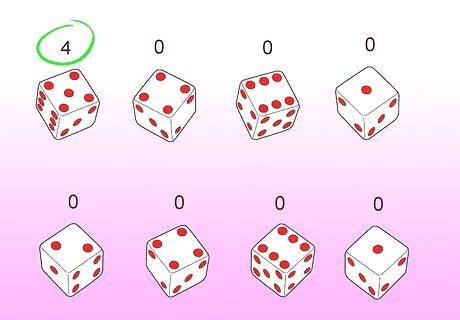
Add up the total amount of petals and get the answer for each roll. If there are no petals or roses, the answer is zero. For example, if you get a roll with 5, 4, 6, 1, there are 4 petals around the rose. 4 and 6 are even numbers so the dice showing these numbers do not count as roses. The die with 1 represents a rose without a petal. The die showing a 5 has 4 petals around the rose. Therefore, the total number of petals around the rose is 4. If you get 2, 4, 6, 1, then the total number of petals will be zero. There are no dice with dots in the center and therefore no roses.
Sharing the Game with Others
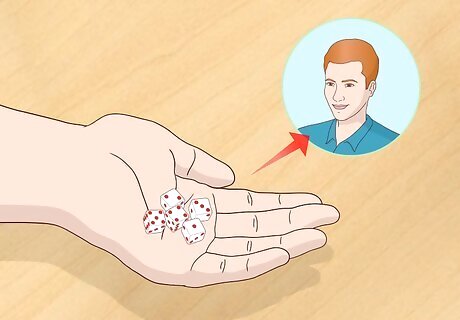
Get 4 - 5 dice and a willing friend. Challenge a friend to play the game and solve the puzzle for themselves.
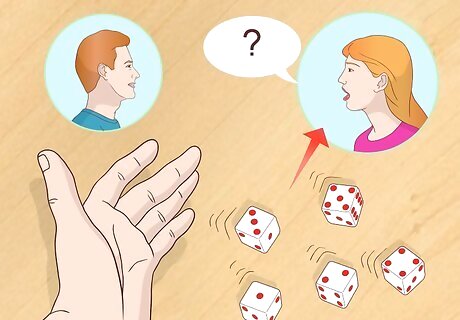
Roll the dice. Ask your friend, "How many petals around the rose are there?" Be prepared to roll the dice as many times as necessary. Remember that different people will take different lengths of time to work out the solution. Some even say that the smarter you are the longer it takes you to work it out! Tell your friend this if they are struggling to work out the solution. It will inspire them to keep going.
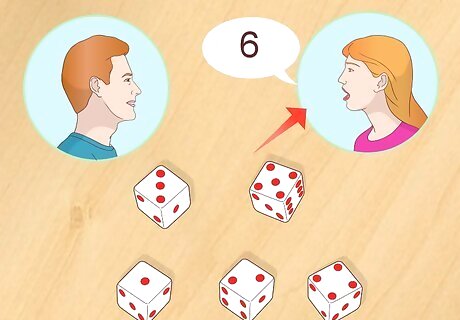
Tell your friend the number of petals around the rose for each roll. Let them know the number of petals but don't reveal the logic behind it. Offer some helpful hints. Remind them that the name of the game is significant. Also, the answer will be either an even number or zero.
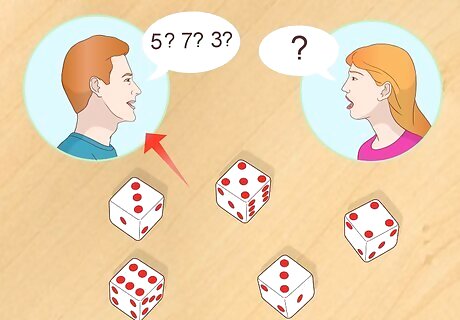
Allow them several chances to guess the answer. If your friend thinks they have worked out the solution, test them by rolling the dice and asking them how many petals around the rose there are. If they guess correctly over several rolls, they have worked out the solution.
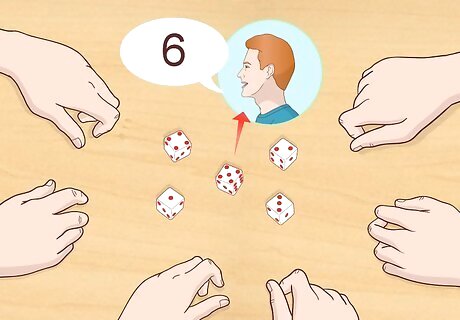
Keep one person from blurting out the answer if playing in a group. This will keep the game fun for all members of the group and allow everyone to work it out in their own time. Tell the first person to solve the puzzle that they are a Potentate of the Rose and they must guard the secret.




















Comments
0 comment